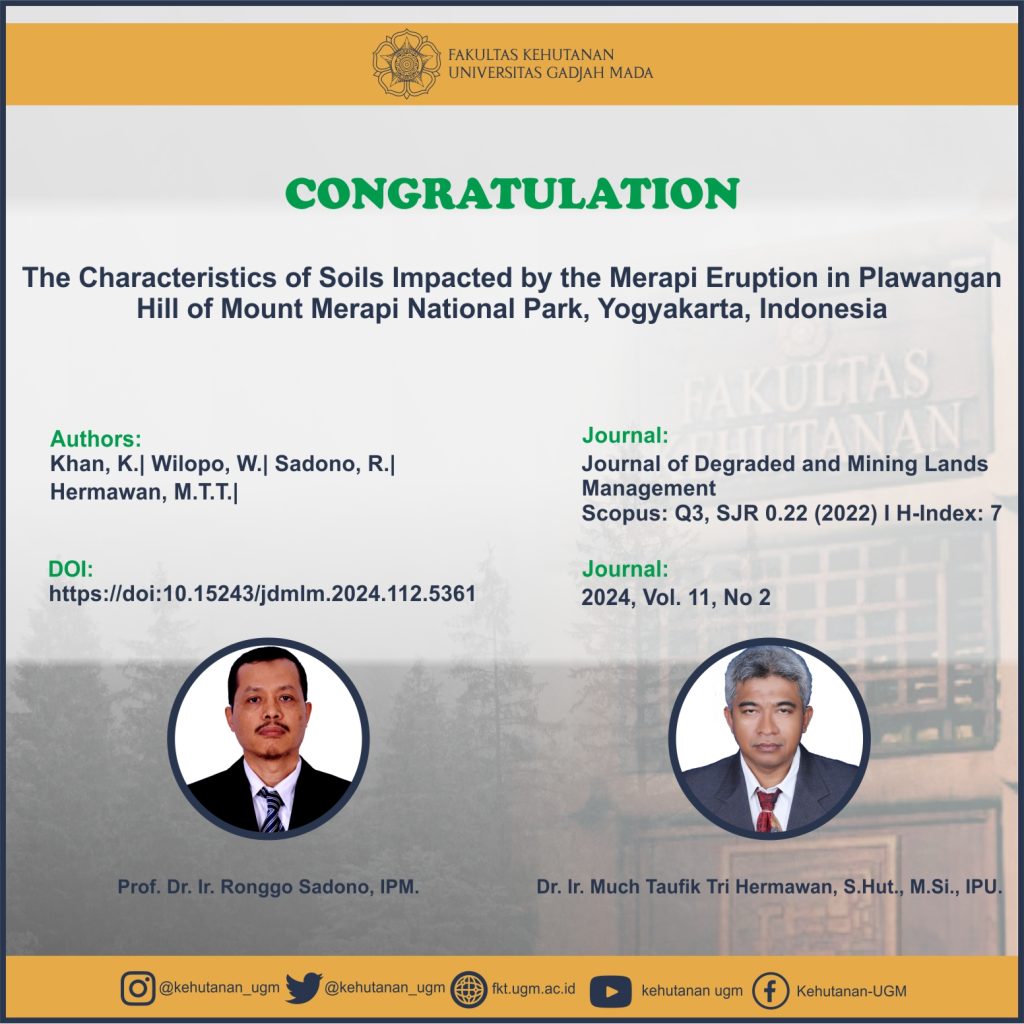
Abstract:
Mount Merapi National Park (TNGM) is one of the active volcanos in Indonesia. It has past volcano eruption history since 1911 up to date. Specifically, Plawangan Hill, a part of the TNGM, has periodically experiencedvolcanic eruptions.This study aimedto examine the quantities of nutrients in the soil and the vegetation growthin affected areasandto estimate when it would be feasible to start planting on Plawangan Hill shortly after a volcanic eruption.A field survey and a soil laboratory examination were conducted to obtain the data. Plawangan Hill’s Digital Elevation Model (DEM)was classified from very low to very high classes,while the Digital Surface Model (DSM)was categorized from flat to very steep slopes. The results demonstrated that the pH of thesoil was typically somewhat acidic (5.93-6.54), while the soil’s nitrogen content was found to be low to medium, and both phosphorusand potassium levels were typically very low. The carbon-to-nitrogen ratio wasgenerally categorized into the medium, while the organic C ranged from low to medium (1.44% to 3.22%).The soil’s totalN, totalK, organic matter, carbon, and C:Nratioincreased by the erupted material age. The vegetation growth was excellent in indirect(IA)and directly affected(DA)conditions, as indicated by their diameter at breast height(Dbh)and height(H). The correlationbetween soilcharacteristicsandvegetationgrowth differedin IA and DA areas. Thisstudy found that Plawangan Hill’s land cover in 2023 varied from low to high regardingvegetation classifications. As a result, volcanic materials significantly contributedtoPlawangan Hill’s soilcharacteristics and vegetation growth. The soil needed at least four years to recover and support vegetation growth following a volcanic eruption.
SDGs:
1. SDGs 4:Quality Education
2. SDGs 11:Sustainable Cities and Communities
3. SDGs 13:Climate Action
4. SDGs 15:Life on Land
Link Dokumen:
Download
